Type Chocolate beverage Flavour Chocolate | Colour Brown | |
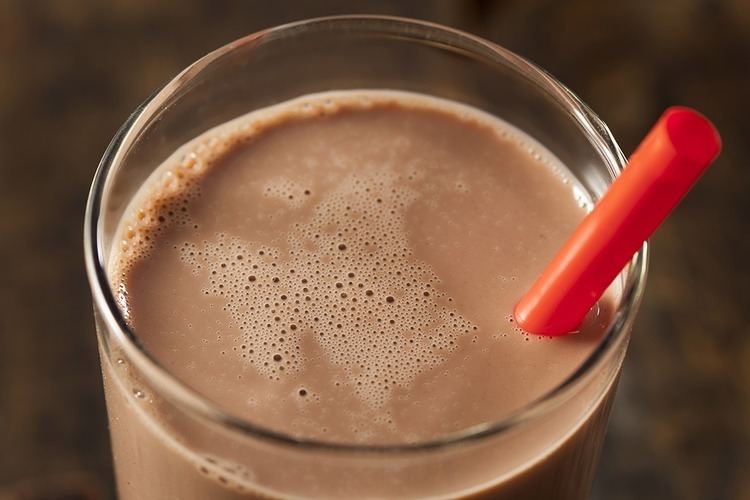 | ||
Similar Hot chocolate, Cocoa solids, Chocolate, Milk, Cocoa bean | ||
How to make your own chocolate milk
Chocolate milk is sweetened cocoa-flavored milk. It can be created by mixing chocolate syrup (or chocolate powder) with milk (from cows, goats, soy, rice, etc.). It can be purchased pre-mixed with milk or made at home by blending milk with cocoa powder and a sweetener (such as sugar or a sugar substitute), melted chocolate, chocolate syrup, or a powdered chocolate milk mix. Other ingredients, such as starch, salt, carrageenan, vanilla, or artificial flavoring are sometimes added.
Contents
- How to make your own chocolate milk
- Chocolate milk bath experiment
- Scientific studies and research
- Nutritional studies
- Nutritional values
- References

The carrageenan is used at very low concentrations to form an imperceptible weak gel that prevents the large, dense particles of chocolate from sedimentation. Chocolate milk should be refrigerated like unflavored milk, with the exception some Ultra High Temperature (UHT) pasteurized drinks, which can be stored at room temperature. Chocolate milk was first created by Hans Sloane in Ireland during the late 1700s, and is generally served cold. The nutritional qualities of chocolate milk are the subject of debate: while some studies criticize the high sugar content of chocolate milk, other studies suggest that chocolate milk is nutritionally superior to white milk.
Chocolate milk bath experiment
Scientific studies and research
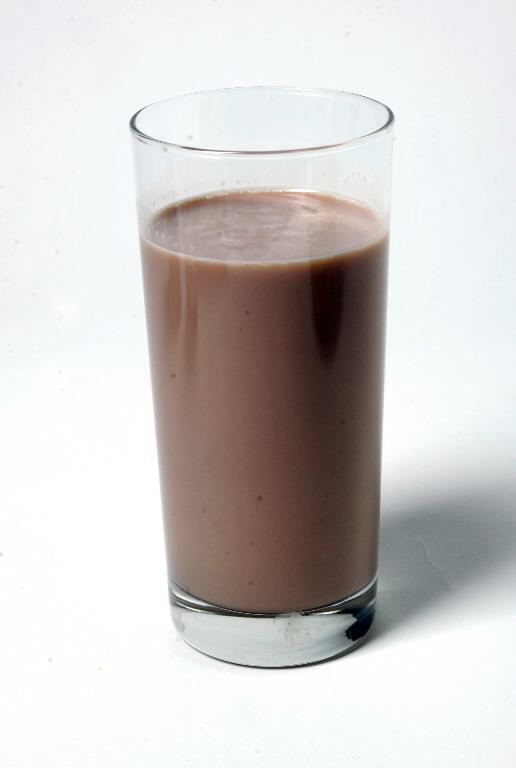
Some nutritionists have criticized chocolate milk for its high sugar content and its relationship to childhood obesity. In New York City, school food officials report that nearly 60 percent of the 100 million cartons served each year contain fat-free chocolate milk. Because chocolate milk can contain twice as much sugar as plain low-fat milk from added sugars, some school districts have stopped serving the product altogether, including some areas in California and Washington, D.C.
Nutritional studies
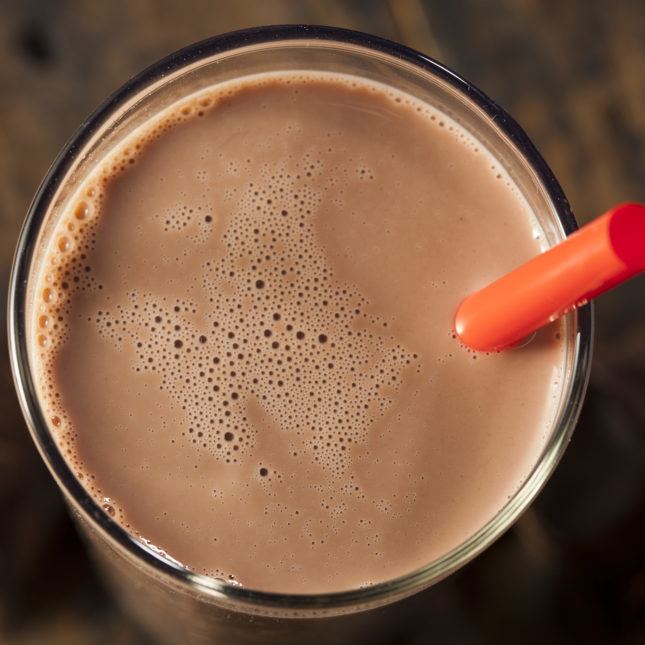
A number of studies have been issued in regards to chocolate milk nutrition. A 2005 study by the New York City (NYC) Department of Education found that by removing whole milk and replacing it with low-fat or fat-free chocolate milk, students were served an estimated 5,960 fewer calories and 619 fewer grams of fat per year. However, more recent studies show that fat-free and low-fat milk may actually increase body fat and contribute to obesity. Whole milk may in fact be healthier for obese children than low-fat or non-fat milk.

In a study conducted in 2006, researchers stated that the benefits of drinking chocolate milk were likely due to its ratio of carbohydrates to protein, among other nutritional properties. However, this study was small in scale as it was conducted on only nine athletes and was partially funded by the dairy industry. Furthermore, the study compared chocolate milk to two energy drinks and unflavored milk was not used as a comparison, so it is unknown if chocolate milk is superior to unflavored milk as a recovery drink.
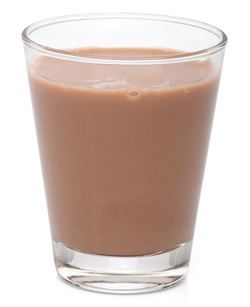
An April 2007 study from Loughborough University indicated that chocolate milk can boost recovery when taken after athletic workouts. The study found that milk was an effective rehydration drink.
A November 2009 study conducted by scientists in Barcelona, Spain suggests that regularly consuming skimmed milk with cocoa rich in flavonoids may reduce inflammation and slow or prevent the development of atherosclerosis. However, the study notes that its effects are not as pronounced as seen in consumption of red wine.
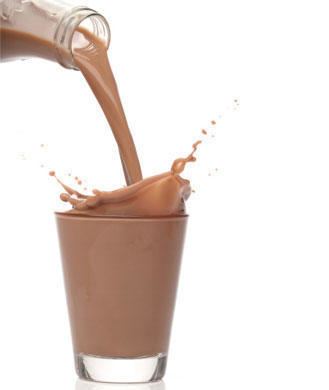
A study published in 2009 compared chocolate milk to a commercial recovery beverage (matched for carbohydrate and protein content) administered to cyclists after intense workouts. The researchers found no difference in post-workout plasma creatine kinase levels and muscle soreness, nor in cycling time to exhaustion. However, being that chocolate milk is usually less expensive than commercial recovery beverages, the researchers concluded that chocolate milk "serves as a more convenient, cheaper...recovery beverage option for many athletes".
Research has shown that drinking 16 ounces of fat-free chocolate milk can lead to a greater concentration of glycogen in muscles at 30 and 60 minutes post-exercise. A trial done in 2006 on nine healthy trained male cyclists proved that subjects cycled 49% and 54% longer following chocolate milk ingestion.
A May 2010 sports nutrition study concluded that "exercise recovery during short-term periods of heavy soccer training appears to be similar when isocaloric CM (Chocolate Milk) and CHO (Carbohydrate) beverages are consumed post-exercise".
Yet another study in 2011 at Kean University in New Jersey concluded similar results in male soccer players discovering that there was an increase in time to fatigue when chocolate milk was consumed. The Kean University study also viewed chocolate milk’s effects on female soccer players undergoing morning and afternoon practices during preseason. They were either given the carbohydrate-electrolyte beverage or chocolate milk between morning and afternoon preseason practices. Following every afternoon practice, each athlete completed a shuttle run to fatigue. The study concluded that chocolate milk is just as beneficial as the carbohydrate-electrolyte beverage in promoting recovery in women.
Nutritional values
There are 5 milligrams of caffeine in each mini carton of chocolate milk. Chocolate has oxalic acid, which reacts with the calcium in the milk producing calcium oxalate, thus preventing the calcium from being absorbed in the intestine. However, it is present in small enough amounts that the effect on calcium absorption is negligible. As chocolate contains relatively small amounts of oxalate, it is unclear to what extent chocolate consumption affects healthy people with calcium-rich diets.
In a 2008 study, participants who consumed one or more servings of chocolate on a daily basis had lower bone density and strength than those participants who ate a serving of chocolate six times a week or less. Researchers believe this may be due to oxalate inhibiting calcium absorption — but it could also be due to sugar content in chocolate, which may increase calcium excretion. It is clear however, that consuming foods high in oxalate — and in turn their effect on calcium absorption — is a more significant concern for people with oxalate kidney stones, which occur when there is too much oxalate in the urine. These people especially should reduce their oxalate intake and increase their calcium intake. However, the high magnesium content in chocolate is likely to reduce the risk of stone formation, because like citrate, magnesium is also an inhibitor of urinary crystal formation. Contrary to popular belief, chocolate milk has been proven in several studies to actually be healthier than white milk. The variety of nutrients provided by chocolate milk outweigh the nutrients of white milk.
